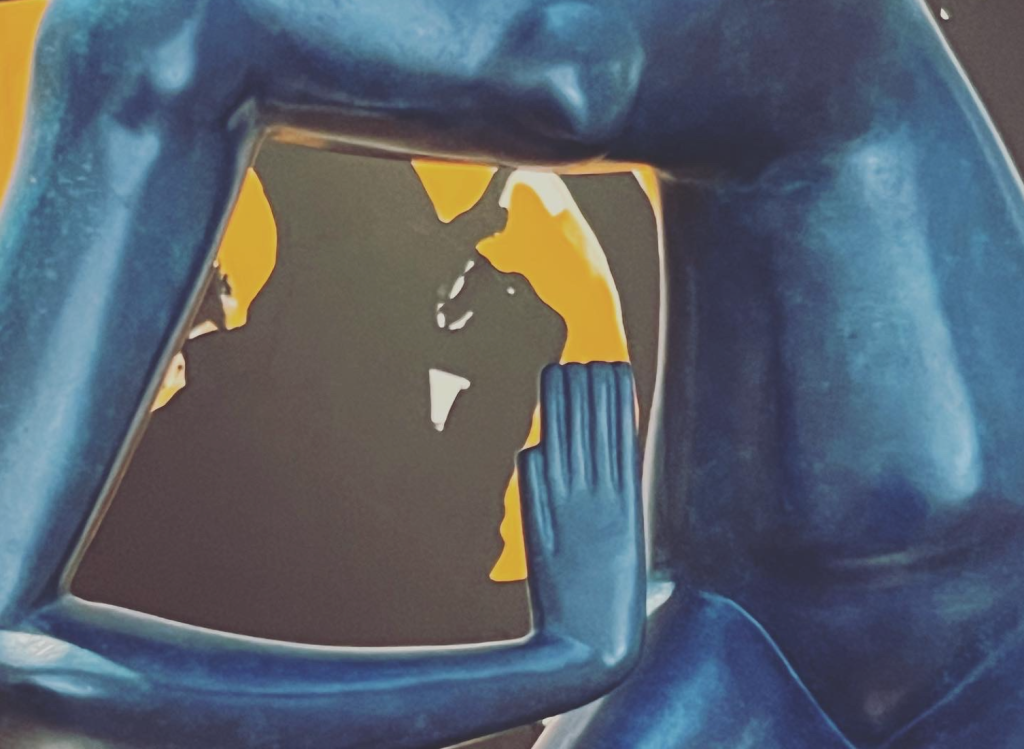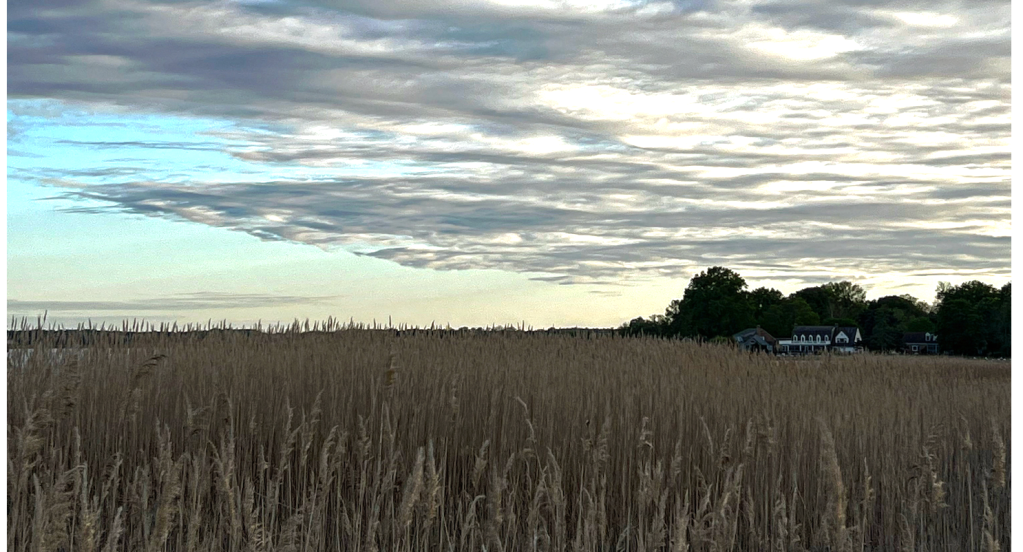
Dress: My grandmother, Nana, spent most of her childhood on a tobacco farm in Franklin County, Virginia, about thirty miles southeast of Roanoke and eighty-some miles due north of Greensboro, NC. It wasn’t a particularly profitable joint, though the fields were green and verdant, rolling down the valley into what would become the bed of Smith Mountain Lake. Family legend (and a couple of elaborate columns outside the family plot erected by an eccentric academic distant cousin named Carl) had it that the family had been issued extensive land grants dating back to the days before the Revolution, and these once vast holdings had conferred wealth and status upon the members of the family, who’d enjoyed lives of prelapsarian ease and great wealth be-fo-ah the wo-ah.[1] But by the time of Nana’s birth, the family was poor by any measure, three years before the actual Depression made them poorer, and my great-grandfather had decamped from the family farm to Tazewell County on the West Virginia border to dig coal.
He met my great-grandmother there. She was the child of a woman who ran a boarding house and an absent, arguably unknown father. They married when they were still young teenagers. And when a mine collapse killed my great-grandfather brother and broke my great-grandfather’s back, he was left with no choice but return to the family farm in Virginia, where he evidently spent the better part of a year spread out on top of the dining room table while his spine painfully and imperfectly healed.

Nana was not much of a farm girl and was sent every summer to spend the season at the boarding house. Pearl was Nana’s favorite grandmother and Nana (Gloria) was Pearl’s favorite grandchild. The former doted on Nana, took her out to dinner with her new husband (the impeccably named Son Sturgill) and shopping at stores for actual new store-bought dresses and shoes, to spare Nana, the shame of being mocked at school for her ragged clothes. She would return at the end of August with a suitcase full of new dresses to begin the year.
As soon as she got back to the farm, however, my great-grandmother would take these dresses and stow them away at the bottom of a blanket chest. Nana would be allowed to wear one dress and only one dress at a time. Every single day to school until it wore out. Then, and only then, would she be allowed to wear another. And if she grew out of the other dresses before then? Well, they could be passed on to other siblings or cousins.
My great-grandmother was a famously kind woman and generous almost to a fault. I don’t think she did this out of ill-will, but perhaps to preserve a sense of fairness between her children (Nana had a little sister). And maybe to keep Nana from bragging about her (comparatively) fancy grandma. But Nana felt betrayed and angry. And I think that it wasn’t just her childhood poverty that inculcated her almost mystical belief in the power of material objects, but that she felt she was denied the few she was personally given.
When Nana died the second of her walk-in closets still contained clothes with the price tags still attached. Some quite fancy. Some quite expensive. Some years old by that point. Maybe she was saving them for a special occasion. Maybe she had them because some piece of her was afraid of not having a choice, of being forced to wear that same old shabby dress with the new one forever just out of reach.

I tend to buy new dresses for special occasions, but I have an extremely hard time saving them for later. I want to wear the new thing immediately, even if that means I’m wearing a ballgown to the supermarket. I’ve gotten better about the impulse over the years because I’m also a klutz and the odds of me spilling an entire coffee on a brand-new white skirt three weeks before the party it’s meant for is, well, the reason I do not buy white skirts. Or white pants. Or white much of anything if I’m being honest. But it’s hard, right? I mean, what if the world ends? What if a comet hits the earth? What if I get hit in the head by a coconut and die suddenly and that dress I so wanted to wear ends up in a walk-in closet with the tags still attached? What if circumstances emerge in which I am never allowed to wear it at all?
I don’t think this is what they mean when they talk about generational trauma being passed down through the DNA, but I’d be lying if I said I hadn’t considered it.
This dress spent exactly 7 days on a hanger between purchase and party. It was 7 days too long.
Sweater: For a brief period of time in the late 80s, early 90s, a bunch of Moms, some of the cool girls at my junior high school, and my punk rock babysitter got way into this local (I think) brand of chunky ribbed clothes in blacks, grays, burgundy and mossy green that mostly consisted of dolman-sleeved tunics, long column skirts, and these almost cape-like open front cardigans that always struck me as looking a bit Biblical, like something a shepherd might wear in a Christmas Pageant set inside a sculpture gallery in not quite post-Soviet Berlin.
I was never sure if they were the owners of those garments or if they had simply borrowed them from their peak midlife-crises mothers, who were casting off the shackles of yesterday in order to take up jewelry design, witchcraft, and/or local politics.[2] Their daughters always looked a little overdressed and certainly overheated (our schools mostly lacked for air conditioning) and also like they’d be leaving after seventh period to fundraise for a Jungian folk art center.
But I wanted to be a cool girl, particularly when I was in junior high school, and I used to envy their batwing tunics and slinky blanket skirts. To get one I would have to ask my mother and have her drive me to the one boutique/consignment store I knew for a fact sold them, and that store was not located near any other place she did any regular shopping. And then I would have to feel awkward trying to explain to here why I wanted it and if I was sure I wanted it badly enough to justify the expense. And I was sure I would second guess and hem and haw and probably so but maybe not and by the time I started to drift toward any hard conclusions one way or the other, we were in 1991 and the cool girls were getting way into baby doll dresses and tartan flannel.
Anyway. I needed a nice lightweight cardigan. This one is a gorgeous flavor of rust, and it has the vibe of those ribbed 8th grade sweaters while being several orders of magnitude lighter weight. I also need things I can wear to the office, and this fits squarely under that heading.
Shoes: These were a splurge. I’ll say it. I’ll just note that, as a lifelong “Wizard of Oz” fan, if a wicked witch were wearing ruby slippers, they’d be shaped like these.
Outfit: This past Sunday was my step-grandmother’s 100th birthday. She is an extraordinary lady, still quick, brilliant, and lively in her second century. Way more with it that I have any hope of being at that age (should I make it that long) or even, say, next Thursday. You can do a lot with a hundred years if you know how to spend your time, and she’s been (in no particular order) a newspaper writer, a published author a teacher, a historian, a dance teacher, a girl scout bigwig, an intrepid traveler, a mother of four and grandmother, great-grandmother, and now great-great grandmother to dozens more.
The event itself, held in a stone lodge on the shore of a lake, technically part of an Episcopal retreat center (so more crucifixes than strictly necessary but no one working there looked at me like they were trying to figure out what neighborhood of hell I’d be spending the afterlife). The party featured a flash mob of cloggers (former students of my step-grandmother), live Dixieland jazz, and a sweet, rendition of “Stardust” that made everyone cry.

I am not a biological relation, but I’ve known my step grandmother since I was a teenager, and probably spent more time with her, in toto, than I have with most of my other grandparents and step grandparents (I had a total of nine, but not all at the same time). And to that end, I’ve spent a fair amount of time with my step-grandfather’s extended family. I don’t believe that biology guarantees a magical bond between people. But on those drowsy, wine drunk evenings around the event, gathered around the splintered porch or a rental cabin, when you’re not the one who has married in, when you’re the attachment of an attachment—not close enough to be kin, but too interconnected to be an acquaintance– to try to work out how much you can say or who exactly you can be with the not quite aunts, uncles and cousins.
It makes me miss my own extended family (many of whom I haven’t seen in years). Because I may not always like where I get sorted, at least I know where I fit.
Nana would have been magnificent on her 100th birthday, by the way. Can you imagine the kind of dresses she would have saved for the occasion? It boggles the mind.

Dress: Hutch, Anthropologie, 2024
Cardigan: Staud, 2024
Shoes: Ganni, 2024
Earrings: Peel Gallery, 2022
[1] And the brutal, hardscrabble existence they’d endured since 1865 was solely the fault of the vile Yankee invaders. If only we could find where Great-Great Uncle Francis Poindexter buried the family silver in advance of those Northern Aggressors! Like many white people of southern heritage, I have not found almost no evidence that any of this is true.
[2] The revolution might not be televised but it would come to city council meetings swathed in roughly sixteen pounds of chartreuse dyed wool.




